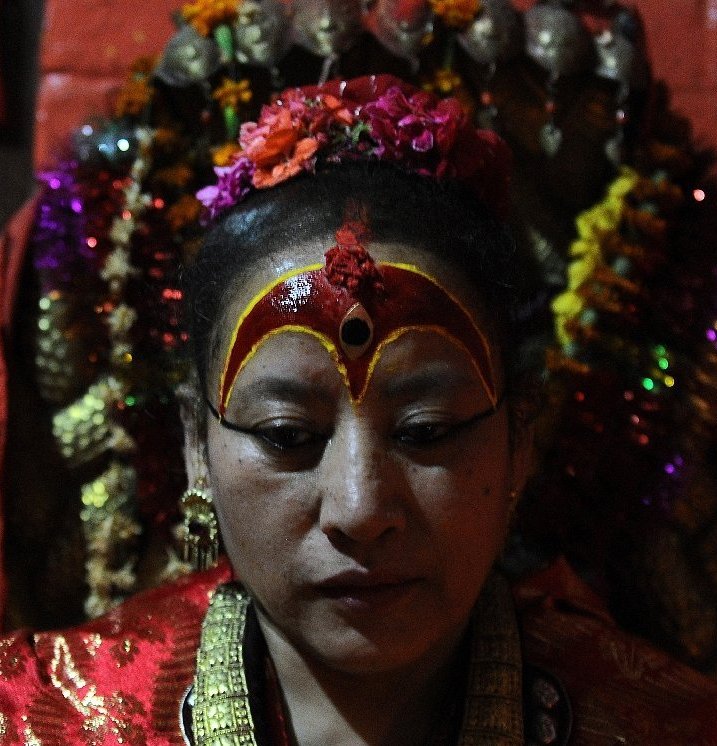Nepal quake forces ‘living goddess’ to break decades of seclusion
When a massive earthquake struck Nepal in April, Nepal’s longest-serving “living goddess” was forced to do the unthinkable – walk the streets for the first time in her life, she told AFP in a rare interview. Still following the cloistered lifestyle she entered at the age of two, Dhana Kumari Bajracharya also opened up about her unusually long 30-year reign, suggesting the pain of her unceremonious dethroning in the 1980s was still raw. Before the 7.8 magnitude April 25 quake, Bajracharya had only ever appeared in public while being carried in an ornate wooden palanquin. The Himalayan nation’s living goddesses, known as Kumaris, live in seclusion and rarely speak in public, bound by customs that combine elements of Hinduism and Buddhism.
I had never thought about leaving the house like that. Perhaps the gods are angry because people don’t respect traditions as much anymore.
Kumari Bajracharya
But as the tremor hit, shaking the ground, reducing buildings to rubble and killing thousands, Bajracharya left her quarters in the historic city of Patan, south of Kathmandu, for the first time in three decades. And for the first time on foot. As the disaster ripped through Nepal, shaking Bajracharya’s five-storey home, her family stayed indoors, waiting to see if the retired Kumari would break tradition and walk out with them. Dhana Kumari Bajracharya was enthroned in 1954 when she was just two years old and reigned for three decades as the Kumari of Patan. The Kumari, a pre-pubescent girl from the Newar community, is considered an embodiment of the Hindu goddess Taleju.
We couldn’t just leave the house like everyone else, we had to think of her. We didn’t know what to do. But when nature forces you, you do the unthinkable.
Barjracharya’s niece, Chanira Bajracharya.

Odd News